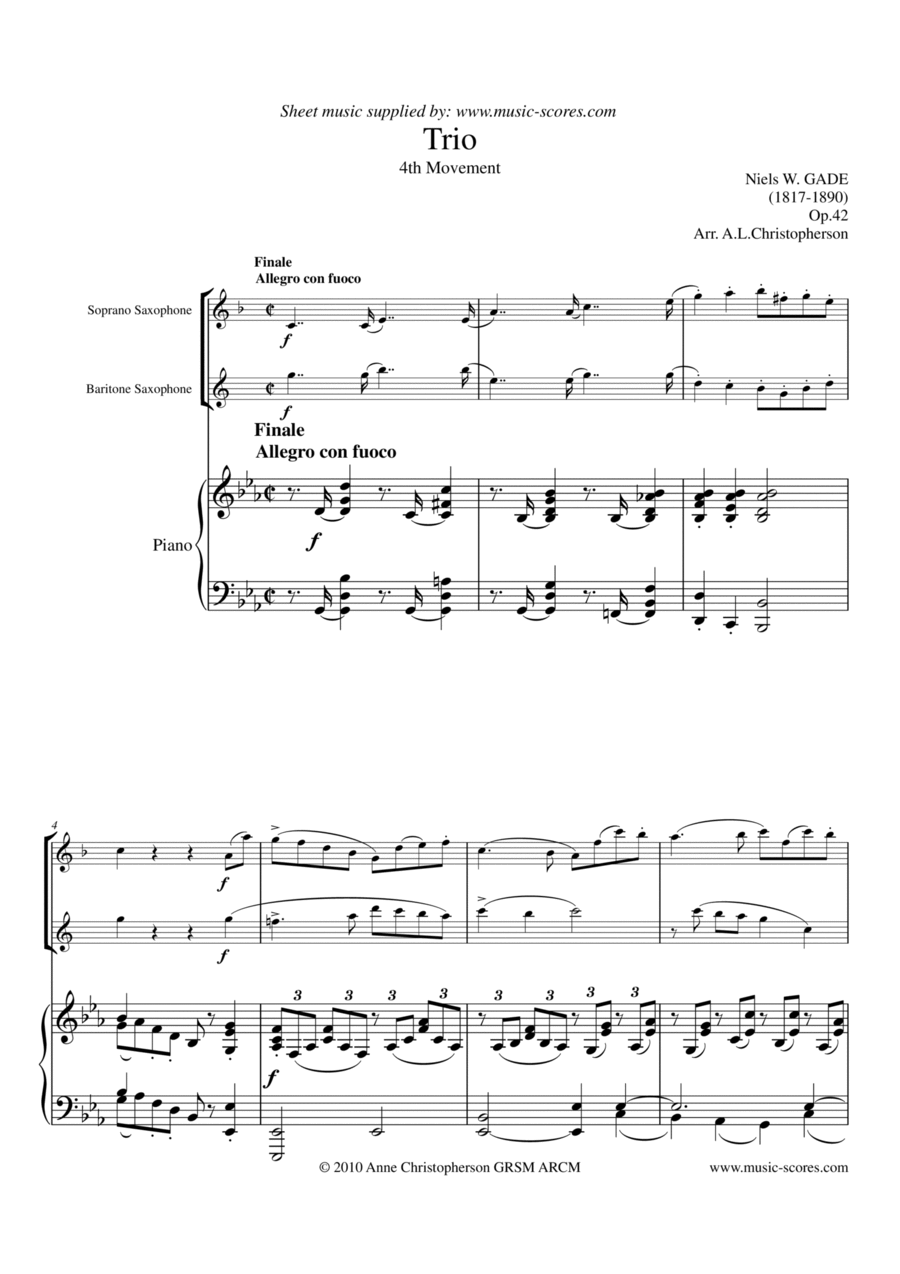Instrumental Duet,Piano Baritone Saxophone,Instrumental Duet,Piano,Soprano Saxophone - Level 5 - Digital Download SKU: A0.722498 Composed by Gade, Nils. Arranged by Anne L Christopherson GRSM ARCM. Concert,Contemporary,Holiday,Love,Romantic Period,Wedding. Score and parts. 39 pages. Music-Scores.com #6703245. Published by Music-Scores.com (A0.722498). 4th Movement of the Piano Trio Op.42: this is Allegro con fuoco and is a great showpiece. Transcribed for Soprano Sax, Baritone Sax and Piano.Eb major.Duration: 8 minutes.Transcribed by A.L.Christopherson GRSM ARCM at www.music-scores.com
